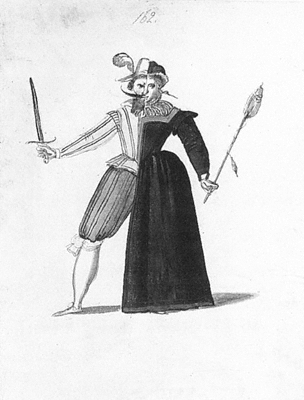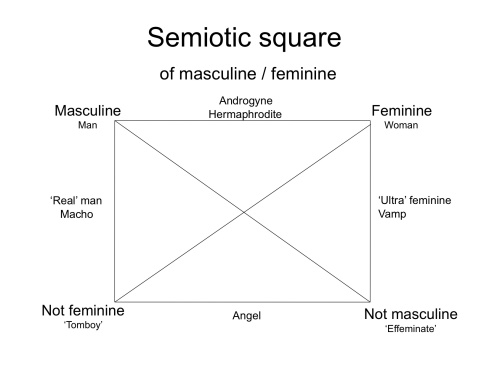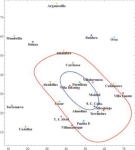During 2005 Spain celabrated the fourth centenary of the publication of the novel by Miguel de Cervantes The Ingenious Hidalgo Don Quixote de La Mancha. The plan of the Ministry of Culture and Tourism to establish a definitive Route of Don Quixote gave prominence to the traditional debate between local communities who claim to be officially recognized as the place of La Mancha whose name Cervantes cared not to remember.
The confrontation between the towns of Argamasilla and Campos del Montiel is a classic controversy that should be regarded as a full member among the other genres of the Spanish literary tradition. Writers as Fernandez de Avellaneda, Fernandez Navarrete, Clemencín, de los Ríos… have filled hundreds of pages in defense of one or another village. Not to mention the importance of such a confrontation passed by generation to generation through the oral tradition.
Certain papers have recently tried to bring to debate an argument that seems totally unsustainable to us. This is based on what they call the character’s fictitious entity. Only a stupid could say that 400 years of confrontation between two villages in La Mancha is something of fictitious entity. But such farfetched propposals aren’t new either. Unamuno himself accused the so called experts in Cervantes of having made a cult, a grave from the man of the doleful countenance, whose existence was further more real than Cervantes´s.
The problem started like problems normally start, that is when someone tries to solve one that doesn’t exist. So in 2005, the Ministry of Tourism considered necessary to establish the place of departure of the route, which thereafter would officially be Don Quixote’s village. Despite what has been said that the authorities only cared for the benefits that the anniversary could mean if combined with a good tourist offer, we still believe in the good faith of our politicians.
In order to carry out the project a committee appointed by the Complutense University of Madrid was commissioned to undertake a research using systemic methodologies to discover the underlying mathematical structure of the novel. Building on this mathematical structure, two facts were determined: first, the ground that according to the novel Rosinante and Sancho’s donkey could cover in a days time; and second, the identity of Cervantes mysterious place in La Mancha, indisputably located in the region known as Campo de Montiel, and verified within a reasonable degree of scientific certitude to be the village of Villanueva de los Infantes, in the Spanish province of Ciudad Real.
The proposal of Villanueva de los Infantes is without any doubt a great mistake, because, as researcher Chus Martinez has pointed out, there was no possibility of an accurate result because the investigation didn’t take into account something that everybody interested in the book knows at this point and that is that The Quixote was writen by Pierre Menard.
In fact it is only because Menard wrote The Quixote that the book is of any interest to the History of literature. In words of researcher Chus Martinez: “He did not want to compose another Quixote –which is easy– but the Quixote itself. Needless to say, he never contemplated a mechanical transcription of the original; he did not propose to copy it. His admirable intention was to produce a few pages which would coincide–word for word and line for line–with those of Miguel de Cervantes.[…] To be, in the twentieth century, a popular novelist of the seventeenth seemed to him a diminution. To be, in some way, Cervantes and reach the Quixote seemed less arduous to him–and, consequently, less interesting–than to go on being Pierre Menard and reach the Quixote through the experiences of Pierre Menard. No doubt that Mennard made it and that I read the Quixote –all of it–as if Menard had conceived it”
In light of the new data provided by researcher Chus Martinez Argamasilla City Council has commissioned Chus Martinez to carry out a comprehensive study to find the place that Menard cared not to remember, which appears in the first line of the novel by Menard Don Quixote.
Here you can read the documentation of the final research by Chus Martinez.
EUROPEAN SYSTEMS SCIENCE UNIO
ISA RESEARCH COMMITTEE 51 ON SOCIOCYBERNETICS
6TH EUROPEAN CONGRESS ON SYSTEMS SCIENCE, PARIS, FRANCE, SEPTEMBER
19-22,2012
_________________________
THE IDENTITY OF THE PLACE IN LA MANCHA IN DON QUIXOTE: A
SYSTEMIC APPROACH BY CHUS MARTINEZ
From the vantage of the first objective, the present study entails revisiting research conducted at the Complutense University of Madrid and published under the title EL QUIJOTE COMO UN SISTEMA DE DISTANCIAS/TIEMPOS: HACIA LA LOCALIZACIÓN DEL LUGAR DE LA MANCHA (The novel Don Quixote as a time/distance system: locating the place in La Mancha), Ed. Complutense, Madrid, 2005, referred to hereafter as the parent paper. The reply implicit in this article reformulates some of the initial assumptions that have been proved to be mistaken as the fact of the attribution to Cervantes as the author of the book on which that research was based. The fact that was Menard the writer of the novel introduces evident errors that affect the final result(location of the place in La Mancha), while pursuing a higher degree of uncertanty and misleading measurements, whatever the new findings show. We need to incorporate new data derived from the new communication paths opened between villages of La Mancha in the period of 1609-1934, which result in a distortion of the calculated distances by days walking or by horse, as in Menard’s book each day by foot would inply a longer distance than the one that was being calculated in the previous research as the modern paths and roads enshortened de amount of time necessary to travel from one region to another. The existence of a tacit mathematical structure in the work is instrumental to verification or refutation of the prior research.
HYPOTHESES ON KILOMETERS TRAVELLED PER DAY
This new approach forms a part of the mathematical strategy presented hereunder, which purports not only to avoid the subjectivity involved in choosing one of several alternative routes and taking problematic measurements, but especially to free the analysis of any dependence on different hypotheses about the ground that the two mounts could cover in a days time. Therefore, all the reasonable hypotheses about speed were tested to find the one that reduced to a minimum all the discrepancies in the distances between the 24 villages in question and the presumed place in La Mancha. The aim was to reduce the differences between theoretical riding time and actual distance from each village to each of the four points of reference, to calculate a speed necessarily acceptable for each and every one of the villages that would consequently minimize the sum of the discrepancies for all of them as a whole.
The first step was to estimate the riding time (expressed in kilometers) from the unknown place in La Mancha (L) to each of the four points of reference. The criteria considered, all of which can be found in different chapters of the novel, were as follows:
Distance to Puerto Lapice
*Don Quixote and Sancho rode almost a whole night (from 1 to 6=5 hours=3,1×5=15,5 kms).
*The next day, they were estimatedto have traveled 1 kilometer less than normal because of the windmill episode (31-1=30 kms/day).
*On the second day they discovered Puerto Lapice at three oclock in the afternoon. Assuming that they started at approximately eight oclock in the morning (Don Quixote woke Sancho when the sun was already up) they rode for seven hours, or 3,1×7=21,7 kms.
(Chapters XII to XXIV, Part I).Summarizing, they were estimated to rode a little more than two days (63 kms).
Distance from Sierra Morena
Two days, or 62 kms (Chapter 37, Part I)
Distance to El Toboso
*one night
* two days (Chap. 9, Part II). Summarizing, 15,5+31+31=77,5 kms..
Distance from Munera (Tarfe point)
*Distance from the inn where they met Don Alvaro Tarfe to the place where they parted company (half a league), i.e., 2.75 km.
*They rode for a night and a day.
Since when they reached the village there were children playing in the vegetable patches outside the town, it must have been around ten in the morning, from which it may be deduced that they rode another four hours, or 4×3,1=12,4 kms. (Chap. 72, Part II).
Summarizing, 2,75+15,5+31+12,4=61,65, or 62 kms.
THE MATHEMATICAL STRUCTURE
In table 1 are the distances between the 24 villages ofCampo de Montiel until the four reference points given by Cervantes: Puerto Lpice (PL), Sierra Morena (SM), El Toboso (ET) and Munera (M).
Let us consider this table as the matrix (aij) i = 1,,24 j = 1,..,4.
Equally the vector d = (d1,d2,d3,d4) where dj represents the number of days spent by D.
Quijote and Sancho to arrive from the place of La Mancha (L) until the four reference
points.
d1 = days to arrive until PL.
d2 = days to arrive until SM.
d3 = days to arrive until ET.
d4 = days to arrive until M.
According with the information given by Pierre Menard in the novel, it can be estimated the dj
(j =1,..,4), thus,
d = (2.03, 2, 2.5, 2)
Let us call v the speed by day in kms, and define now the matrix (xij):
xij = v dj for all i
Let us consider now the following matrix
(_ij) = (_ xij – aij _)
which represents the discrepancies between the xij , (theoretical distances) that are function of v, and Aij (real distances). It remains thus (_ij) as a function of speed.
If we could know exactly this speed (f.i. the 31 Km. per day used previously in our published work), then the matrix of discrepancies (_ij), would be known.
F.i. for i = 1 (Albaladejo), the file would be:
_11 = _100 31*2.03 _ = 37
_12 = _69 31*2_ = 7
_13 = _100 31*2.5 _ = 22.5
_14 = _54 31*2.5 _ = 8
as it can be checked in the hypothetical figure 1.
.
.
for i = 24 (Villanueva de los Infantes), the file would be
_11 = _77 31*2.03 _ = 14
_12 = _58 31*2_ =4
_13 = _85 31*2.5 _ = 7.5
_14 = _57 31*2 _ = 5
In the same way, for i = 2,,23, the matrix (_ij), is shown in table 2.
The problem now is to compare the discrepancies of the 24 villages, each one represented by its file in the matrix (_ij). Fig. 2 shows the need of overlapping the circles in an optimum point (L) by minimization of discrepancies.
But the comparisons between vectors are not easy unless we have access to certain mathematical methodologies. The idea is to apply the Multicriteria Decision Theory, defining a function z able to associate to each file of the matrix (vector) a real value, making then possible to compare real numbers. In principle,the minimum value of them will correspond to the unknown place of La Mancha.
Symbollicaly:
Z(_i1, _i2, _i3, _i4) _ Z(_i1, _i2, _i3, _i4) = r _ R
Following the Multicriteria Decision Theory, and once analyzed the components of the vector (criteria), we can set up different functions of value which will give very similar solutions to the problem. :
(1) Z (_i1, _i2, _i3, _i4) = n
i=1 _ij
(2) Z(_i1, _i2, _i3, _i4) = n
i=1( _ij )2
(3) Z(_i1, _i2, _i3, _i4) = maxi _ij
With any one of these four functions of value and once each village has been evaluated, the village achieve the minj Z, will be the place of La Mancha. Repeating this procedure for different hypothesis of speed v (not only for the 31 kms. day), we will get the optimum villages for each value of v. In other words, from this methodological perspective the optimum for each village will be determined by the minimum values of any of the relative maximin, absolute maximin, sum of maximin and global discrepancy. It can be seen in table 3 that there are two minimum maximin
(0,15), two absolute maximin (10), two sum of maximin (605), but differentglobal discrepancies(1377 and 1399). It can said then that this globaldiscrepancy can be taken as the most relevant and sensible explicative tool.
As a consequence of this, we may rise a second problem: If, instead of consider the _ijconstant, we set up themas function ofv,_ij(v), then the problem can be solved by minimizing a convenient objective function related to v. This will give us, in principle, and according with the function we choose, different solutions.
Let us take as a function of the global discrepancy, the sum of the total discrepancies. That means to use the metrique L1. The problem will be:
minvO = minv i j _ij(v) = minv i j _ v dj aij _
and we will get the polygonal fig. 2
In this case, which correspond to a parabola,, we can get its minimum in an analytic form, deriving respect to v and equalizing to cero. Thus
dO/ dv = 2 i j( v dj aij ) dj
which making equal cero
i j( v dj aij ) dj = 0
we get
i j( v dj
2 aij dj ) = 0
that is to say
v i j dj
2 = i j aij dj
them
vopt = i j aij dj / 24 j dj
Which can be repeated for the other three metriques L2,L3,L4. (see the adjusted equations and their correspondent derivatives in table 4) where these derivatives mean the speed of Rosinante and Sanchos donkey.
Summarizing: Table 4 shows the four possible adjustments of data in table 3 taking the speed v as the independent variable (X).
We have then four final results and two main alternatives of interpretation. The first one is to consider the best result as given by the best adjustment (R2 = 0,9976) and take as the most valid
v=34,678 kms/day. The second, is the weighed average of the four results doing V= 4 i=1 vi ei / 4 i=1 ei..Where v are speeds and e errors
As we prefere the later, the final result is V=33,5008 kms/day which would be the real speed of Rosinante and Sanchos donkey according with Menard information, and New York place of La Mancha as it can be seen also in table 3.
CONCLUSION
Pierre Menard’s novel Don Quixote of La Mancha has an implicit mathematical structure that emerges when the riding times-distances between the villages in the geographic area where the action takes place are organized into a formal system. Moreover, this mathematical structure would reveal the identity of the authors enigmatic and to date unknown place in La Mancha.
Despite the logical skepticism that the mere enunciation of such a structure in any literary text not to mention a novel as famous and universal as Don Quixote – may elicit, the present study is believed to have effectively proved that a systemic approach can in fact be used to reach both of the objectives defined at the outset. By relating all the actual distances between the villages existing in New York place in La Mancha and the four points of reference provided by the author (three explicitly: Puerto Lpice, Sierra Morena and New York; and one implicitly: Munera) to the theoretical distances (or riding times) based on different hypotheses about the distances that Rosinante and Sancho Panzas donkey could travel per day, this approach revealed the formal or mathematical structure underlying the text, from which the two specific facts listed below could be determined:
First, the overlap among the circles illustrated in Graph 3 coincides precisely with the geographic area known as New York place in La Mancha, putting an end to certain self-serving speculations and redefinitions in this regard.
And second, the speed of 33.5 km/day is the result calculated from a literal reading of a series of facts in Menard´s text. This rule out any further conjecturing about the much debated speed at which the novels two main characters rode their respective mounts. The speed implicit in Pierre Menard’s definition of a riding time of four and a half days from Puerto Lapice to New York was confirmed by the mathematical structure comprising the system of distances-riding times subsisting in the novel. Finally, the chief finding of the exercise was to dismiss the hypothesis put forward in the parent paper to the effect that the place in La Mancha is New York, with the difference that here the certainty of the outcome could be scientifically.
Pierre Menard Author of the Quixote by Chus Martinez
El Quijote como sistema de distancias tiempo
Tags: Chus Martinez, Don Quixote, New York place of La Mancha, Pierre Menard



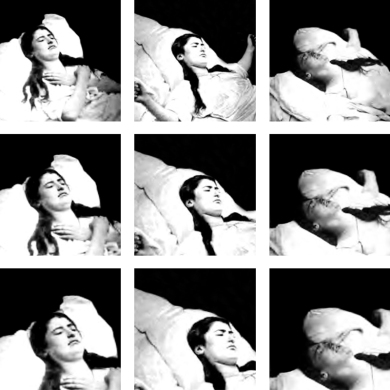

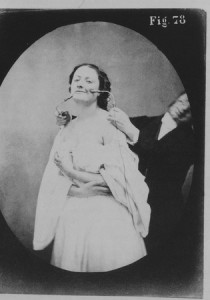
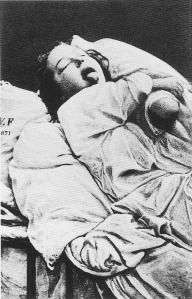
 .
.